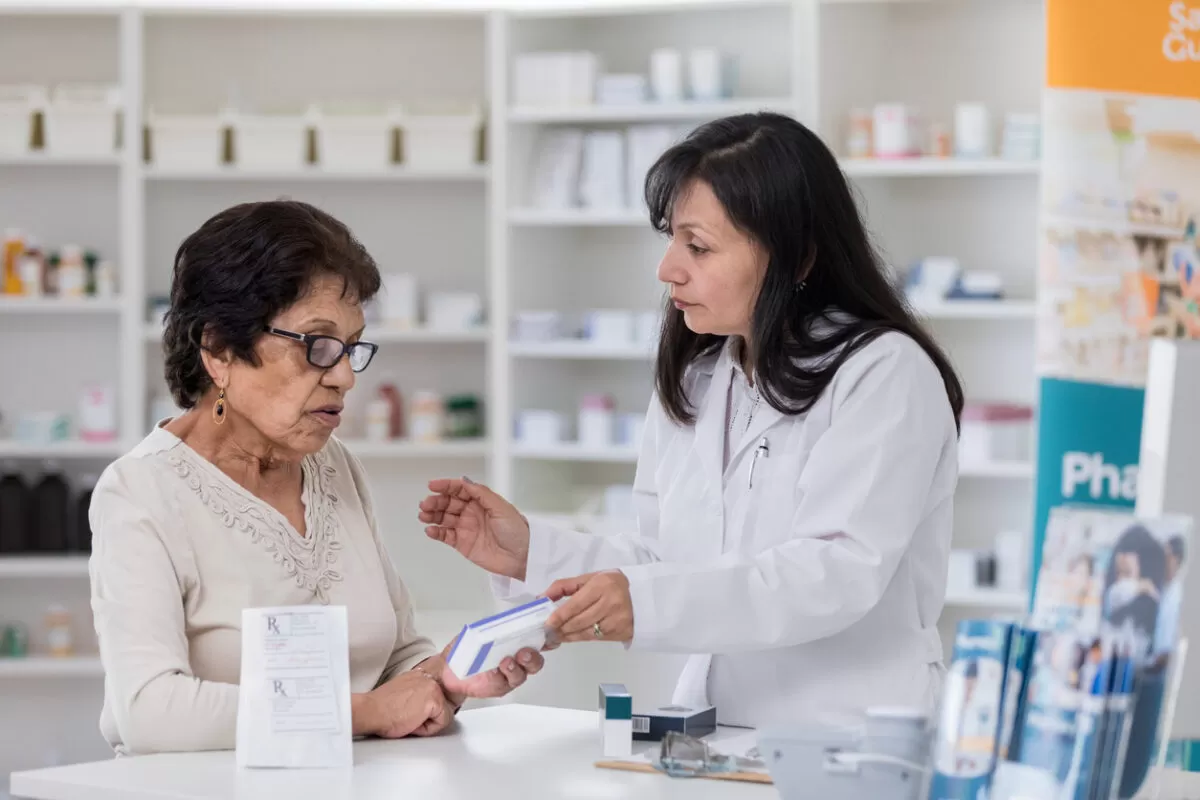
A drug rash is an allergic reaction to a medication, causing skin irritation that can range from mild redness to severe blistering. Symptoms may include itching, swelling, or redness, and in some cases, it can lead to serious conditions. Prompt treatment and consultation with a healthcare provider are essential for managing drug rashes effectively.
A drug rash can be a surprising and unsettling reaction to medication, often causing discomfort and concern. Whether it’s a mild irritation or a more serious reaction, knowing how to address a drug rash can significantly improve your health and well-being.
This article explores the causes, symptoms, and treatment options for drug rashes, including how a compounding pharmacy can offer specialized care.
Understanding a Drug Rash and How a Compounding Pharmacy Can Help
Drug rashes are an immune system response to certain medications, and they can range from mild skin irritations to more severe, life-threatening reactions. These rashes may be triggered by a variety of factors, including allergies to specific drugs or interactions between medications.
Here is an in-depth look at what causes drug rashes, how they are treated, and how compounding pharmacies can provide tailored solutions for patients dealing with these reactions.
What is a Drug Rash?
A drug rash is an allergic or adverse reaction to a medication that results in changes to the skin’s appearance. This condition occurs when the body’s immune system responds to a drug as if it were harmful, triggering inflammation and other skin changes. The rash can appear anywhere on the body and is often red, itchy, and sometimes blistered.
While many drug rashes are mild and resolve on their own, others can be severe and require medical intervention. Some medications, such as antibiotics or anticonvulsants, are more likely to cause these types of reactions. The severity of a drug rash depends on the individual’s immune system and the drug involved.
Symptoms of a Drug Rash
The symptoms of a drug rash vary depending on the type and severity of the reaction. Typically, a drug rash starts as redness or irritation on the skin, often accompanied by itching or burning sensations. The rash may develop into hives, blisters, or even peeling skin in more severe cases. Swelling of the face, lips, or throat may occur in some instances, which could indicate a serious allergic reaction such as anaphylaxis. In rare cases, a drug rash can cause systemic symptoms, including fever, muscle aches, or joint pain. If any of these symptoms occur, it is crucial to seek medical attention immediately.
Identifying a drug rash early can help prevent further complications and aid in the appropriate treatment.
Common Causes of Drug Rashes
Drug rashes can be caused by a wide range of medications, including both prescription and over-the-counter drugs. Antibiotics such as penicillin and sulfonamides are among the most common culprits of drug-induced rashes.
Other medications, like anticonvulsants, nonsteroidal anti-inflammatory drugs (NSAIDs), and certain blood pressure medications, can also lead to rashes in some individuals. Allergic reactions to medications can develop immediately or after prolonged use, making it difficult to pinpoint the exact cause.
In some cases, a drug rash may be a sign of a more serious condition like drug-induced hypersensitivity syndrome, which can affect internal organs.
Therefore, it is important to discuss any new symptoms with a healthcare provider when taking medications.
Types of Drug Rashes
Drug rashes can be categorized into several types, depending on their appearance and underlying cause. The most common type is a maculopapular rash, which appears as red, flat, or raised spots on the skin and is often itchy. Urticaria, or hives, are another form of drug rash, characterized by raised, itchy welts that can vary in size.
In severe cases, drug rashes can progress into blistering conditions like Steven-Johnson syndrome or toxic epidermal necrolysis, which involve the detachment of skin layers and can be life-threatening.
Another type of drug rash is the fixed drug eruption, which causes dark patches to appear on the skin and may recur in the same location with each exposure to the drug.
Recognizing the type of rash is important for determining the appropriate course of treatment.
How Drug Rashes are Diagnosed
Diagnosing a drug rash typically begins with a review of the patient’s medical history and a detailed account of any medications taken. This is followed by a physical examination, where a healthcare provider will assess the appearance and distribution of the rash.
In some cases, a patch test or skin biopsy may be conducted to confirm the diagnosis or to rule out other conditions. Blood tests may also be ordered to evaluate the presence of any underlying allergic reactions or systemic issues caused by the drug rash.
Once the diagnosis is made, it is important to stop taking the medication responsible for the rash, and treatment options will be discussed to manage the symptoms and prevent complications.
Treatment Options for Drug Rashes
Treatment for a drug rash generally involves stopping the medication that caused the reaction. In mild cases, over-the-counter antihistamines or corticosteroid creams may be sufficient to relieve itching and inflammation. More severe cases may require prescription-strength treatments, such as oral corticosteroids, to manage swelling and prevent further reactions. In cases of blistering or systemic symptoms, hospitalization may be necessary to provide intravenous fluids, antibiotics, or other supportive treatments.
It is also essential to monitor for signs of anaphylaxis, especially if swelling of the face, throat, or difficulty breathing occurs. In cases of recurring drug rashes, an allergist may help identify alternative medications or provide guidance on preventing future reactions.
How a Compounding Pharmacy Can Help
A compounding pharmacy can offer valuable solutions for individuals dealing with a drug rash, particularly when standard treatments are ineffective or unavailable. Compounding pharmacists can customize medications to meet the unique needs of patients, such as creating topical creams or ointments that combine multiple medications for enhanced relief. For individuals with sensitivities to certain ingredients or those who need alternative dosages, a compounding pharmacy can provide formulations free of common allergens or irritants.
Additionally, compounded treatments can be tailored to treat the specific symptoms of a drug rash, such as itching, inflammation, or pain, offering a more personalized approach to healing. By working closely with healthcare providers, compounding pharmacies can help ensure that patients receive the most effective and targeted treatment for their drug rash.
Benefits of Compounded Treatments for Drug Rashes
Compounded treatments offer several benefits for patients dealing with drug rashes. One of the primary advantages is the ability to create customized formulations that address individual symptoms. For example, a compounded cream may combine corticosteroids with soothing ingredients like aloe vera or calamine to provide immediate relief from itching and irritation.
Compounding also allows for the preparation of medications in specific strengths or forms, such as creams, gels, or lotions, that may be more effective for a patient’s skin condition. For individuals with allergies to certain preservatives, dyes, or fragrances, compounded medications can be prepared without these potentially irritating substances.
Ultimately, compounded treatments provide a more tailored approach to managing the discomfort associated with a drug rash.
When to See a Doctor
If you develop a drug rash, it is important to seek medical attention to determine the cause and appropriate treatment. If the rash is accompanied by symptoms such as difficulty breathing, swelling of the lips or throat, or fever, it is crucial to seek emergency care immediately, as these may indicate a severe allergic reaction.
Even if the rash seems mild, it’s essential to discuss it with your doctor, who can help determine whether the rash is caused by a drug allergy or another underlying condition. Prompt intervention can help prevent the rash from worsening and ensure that you receive the appropriate treatment to manage the symptoms.
Need Compounding Medicine?
If you’re dealing with a drug rash and need personalized treatments, Burt’s Rx in Newbury Park, Moorpark, Westlake Village, and Thousand Oaks offers expert compounding services to help. This includes services like pain management compounding solutions, pediatric compounding, pet compounding, and bioidentical hormone replacement therapy. Whether you need a customized topical solution or alternative dosages, Burt’s Rx can create a formula tailored specifically to your needs.
Trust Burt’s Rx to provide the right solution to help alleviate the discomfort caused by drug rashes and other skin conditions.
Conclusion
Understanding a drug rash and how to treat it effectively is essential for managing your health. While many drug rashes are mild and can be treated with over-the-counter remedies, some may require specialized care, including compounded treatments.
Working with a healthcare provider and a compounding pharmacy can help ensure that you receive the right treatment tailored to your unique needs.
Disclaimer: This article is meant for educational and entertainment purposes only. Do not substitute it for medical advice. Always listen to your doctor for the management of your condition.

 info@burtsrx.com
info@burtsrx.com
